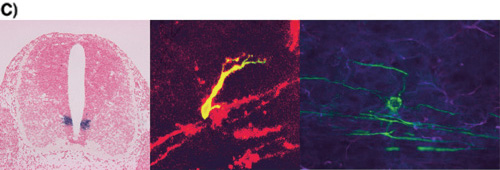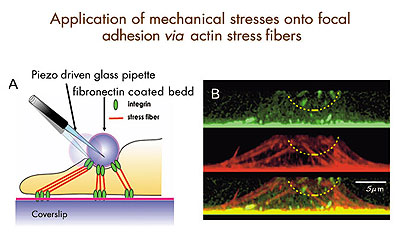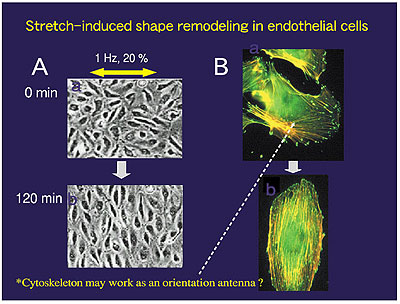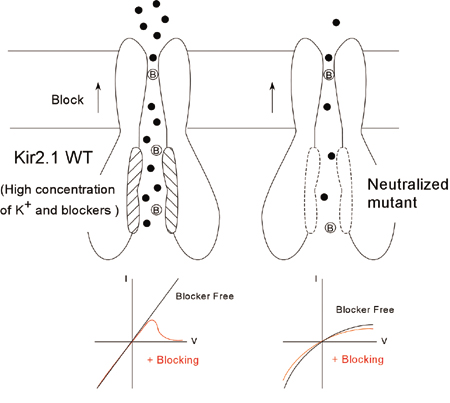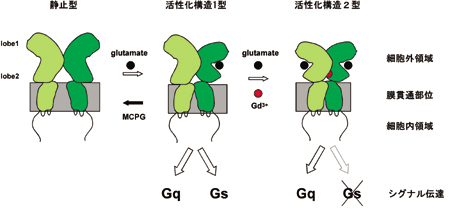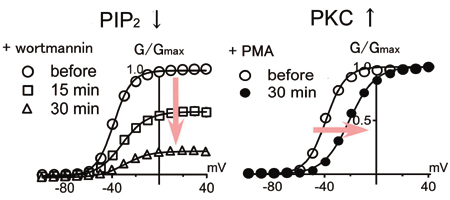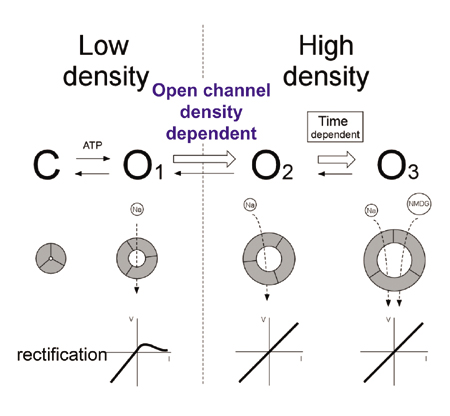Staff |
 |
Professor:
KUBO, Yoshihiro, MD, PhD
1985 Graduated from University of Tokyo, Faculty of Medicine. 1989 Completed the doctoral course in Medical Science, University of Tokyo. 1989-2000 Researcher, Tokyo Metropolitan Institute for Neuroscience. (1991-1993: Post-doc, University of California, San Francisco). 2000 Professor, Tokyo Medical and Dental University Graduate School of Medicine. 2003 Professor, NIPS.
Specialty: Biophysics, Neurobiology |
 |
Associate Professor:
TATEYAMA, Michihiro, PhD
1990 Graduated from University of Tokyo, Faculty of Pharmacology. 1995 Completed the doctoral course in Pharmacology, University of Tokyo. 1995-2000 Assistant Professor, Juntendo University School of Medicine. 2000-2002 Research Fellow, Columbia University. 2002-2004 Research Fellow, CREST. 2004 Associate Professor, NIPS.
Specialty: Pharmacology, Physiology |
 |
Assistant Professor:
NAKAJO, Koichi, PhD
1997 Graduated from University of Tokyo, College of Arts and Sciences. 2002 Completed the doctoral course in Life Science, University of Tokyo Graduate School of Arts and Sciences. 2002 Inoue Research Fellow. 2004 Research Fellow, NIPS. 2005 Assistant Professor, NIPS.
Specialty: Molecular and Cellular Physiology |
 |
Postdoctoral Fellow:
ITOH, Masayuki, PhD
2001 Graduated from Toho University, Faculty of Science. 2006 Completed the doctoral course in Science, Toho University. 2006 Research Fellow, NIPS.
Specialty: Molecular biology |
|
During the course of formation of the mammalian central nervous system, neuroepithelial cells differentiate into various kinds of cells to make a fine three-dimensional network. Our goal is to understand genetic control over these processes. As a first step, we have cloned several genes that are specifically expressed in a certain type of brain cells and are investigating their role on cell fate determination. Neural cells are known to leave the ventricular zone after their commitment, and migrate towards destinations. While radial neuronal migration has been studied extensively in the developing cerebral and cerebellar cortices, mechanisms underlining tangential migration of neuronal and glial progenitors remains unclear. We are employing in ovo or in utero electroporation method to introduce exogenous genes in developing central nervous system, and studying mode and mechanisms of neural cell migration.
We are making use of hereditary mutant mice that exhibit abnormal development of the nervous system. We also use in situ hybridization and immunohistochemical technique to study cell lineages during development of the nervous system.
Neural stem cells, which are ultimate lineage precursors to all neurons and glia in the mammalian brain, are present not only in embryonic but also in adult brains, and contribute to adult neurogenesis. We are investigating molecular mechanisms underlying the generation, proliferation, maintenance, differentiation, and senescence of the neural stem cells, which will clarify their in vivo kinetics and function.
An automated system to analyze N-linked sugar chains was developed to study their biological roles during development and tumorigenesis.
New retroviral vectors are also constructed for efficient gene delivery, which will be used for cancer gene therapy.
|
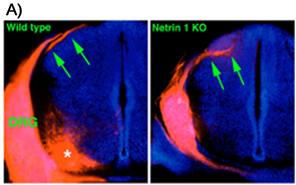 |
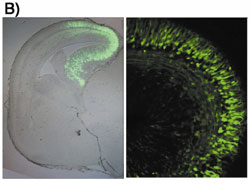 |
|
A) Aberrant projection of DRG axons to the dorsal spinal cord in the Netrin 1 deficient mouse. DRG axons are labeled by DiI application to DRG. In the wild type spinal cord, DRG fibers form axon bundle in the dorsolateral superficial part (arrows in left picture). By contrast, DRG axons in the Netrin 1 deficient mouse spinal cord enter the mantle layer directly and form aberrant axon bundle within it (arrows in right picture). Asterisk in left picture indicates motoneurons labeled retrogradely, which is not a defect of Netrin deficiency.
B) In utero electroporation was carried out for plasmid DNA transfer. Green fluorescent protein (GFP) expression vector was injected into lateral ventricle and electroporated in utero. The cells in the restricted region were observed to express GFP |
Staff |
 |
Professor:
IKENAKA, Kazuhiro, PhD
1975 Graduated from Faculty of Science, Osaka University. 1980 Graduated from the doctoral course at Osaka University, PhD. 1980 Instructor at Institute for Protein Research, Osaka University. 1991 Associate Professor at Institute for protein Research, Osaka University. 1992 Professor, NIPS.
Specialty: Molecular Neurobiology |
 |
Associate Professor:
ONO, Katsuhiko, PhD
1980 Graduated from Faculty of Science, Okayama University. 1982 Graduated from the master course at Okayama University. 1988 PhD from Okayama University Medical School. 1982 Research Associate at Okayama University Medical School, 1993 Assistant professor at Okayama University Medical School. 1995 Associate professor at Shimane Medical University. 2003 Associate professor at NIPS.
Specialty: Neural Development |
 |
Associate Professor:
HITOSHI, Seiji, MD, PhD
1988 Graduated from Faculty of Medicine, University of Tokyo. MD. 1993 Board-certified neurologist by Japanese Society for Neurology. 1997 PhD from Graduate School of Medicine, University of Tokyo. 1997 Special Postdoctoral Researcher at the Institute of Physical and Chemical Research (RIKEN). 1999 Postdoctoral Fellow at University of Toronto. 2003 Assistant Professor at University of Tokyo. 2003 Associate Professor at NIPS.
Specialty: Developmental Neurobiology, Neurology |
 |
Assistant Professor:
TAKEBAYASHI, Hirohide, MD, PhD
1995 Graduated from Kyoto University, Faculty of Medicine. 1999 Graduated from Kyoto University, Graduate School of Medicine.1999 Postdoctoral Fellow, Kyoto University, 2002 Research Associate, NIPS.
Specialty: Molecular Neurobiology |
 |
Assistant Professor:
TANAKA, Kenji, MD, PhD
1997 Graduated from Keio University, School of Medicine. 1997-1999 Resident in Department of Neuropsychiatry, Keio University, School of Medicine. 2003 Completed the doctoral course in Keio University. 2003 Research Associate, NIPS. 2004 Assistant Professor, NIPS.
Specialty: Neurochemistry, Biological psychiatry |
 |
Postdoctoral Fellow:
DING, Lei, MD, PhD
1990 Graduated from DaLian Medical University ,China. 2003 Completed doctoral course in medicine at the Hokkaido University. 2003 Research Fellow, NIPS. 2004 Postdoctoral Fellow.
Specialty: Neural Development and Neuroanatomy |
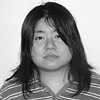 |
Postdoctoral Fellow:
NARUSE, Masae, PhD
2001 Graduated from Tokyo Institute of Technology, Department of Bioscience and Biotechnology. 2003 Graduated from the master course in Tokyo Institute of Technology, Department of Bioscience and Biotechnology. 2006 Graduated from the doctoral course in Life Science, the Graduate University for Advanced Studies, PhD. 2006 Postdoctoral Fellow.
Specialty: Neural Development |
 |
Postdoctoral Fellow:
HIGASHI, Mikito, PhD
2002 Graduated from Department of Bio-Medical Engineering, Tokai University. 2006 Graduate from the doctoral course at Graduate University for Advanced Studies, PhD. 2006 Postdoctoral Fellow, NIPS.
Specialty: Molecular Neurobiology, Stem Cell Biology |
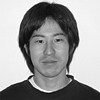 |
Postdoctoral Fellow:
WATANABE, Keisuke, PhD
2001 Graduated from Faculty of Agriculture, Tohoku University. 2003 Graduated from the master course in Agricultural Science, Tohoku University. 2006 Graduated from the doctoral course in Life Science, the Graduate University for Advanced Studies, PhD. 2006 Postdoctoral Fellow, NIPS.
Specialty: Neural Development |
|
Cell signaling that generates proper cell responses to various stimuli is the essence of life. To understand its mechanism is one of the goals of life sciences. This division is aiming to elucidate the spatio-temporal regulation mechanisms underlying cell signaling, focusing on the dynamics of ion channels, cytoskeletons, and adhesion molecules by use of electrophysiological and advanced imaging techniques.
The subjects of research are,
(1) Cell signaling in response to mechanical stimuli:
Virtually every cell can properly respond to mechanical stimuli, e.g., electrical responses in the inner ear hair cells and cutaneous mechanoreceptors, disuse atrophy in muscle and bone under microgravity, or shear stress induced NO production in endothelial cells. However, its molecular mechanisms are largely unknown due to the ambiguity of the mechanotransduction process in cells. We therefore focus on SA channels and the cytoskeleton/focal adhesion complex as representative cell mechanosensors and investigate their roles in mechanosignaling through the development of innovative light microscopy and micro mechanical manipulation of the cell (Fig.1). A typical subject is stretch-induced shape remodeling, where endothelial cells align their long axis perpendicular to the stretch axis. This response includes many intriguing functions, such as sensation of force direction and spatio-temporal integration of dynamics of stress fibers and focal adhesions during their rearrangement (Fig.2).
(2) Intracellular Ca2+ signaling:
When various mechanical stimuli, such as have induced by cell-cell interaction or stimuli induced by biological activators such as hormones, are given to a cell, the cell exhibits intracellular Ca2+ changes in response to them. The Ca2+ changes are modulated and processed on to the next signal pathways, leading to various significant cell functions. The process called intracellular Ca2+ signaling is one of the most significant and major signal transduction mechanisms in cells of almost all organisms. We use Ca2+ and Na+ imaging techniques, and electrophysiological methods to perform our experiments in addition to cellular manipulations such as microsurgery and microinjection of materials into cells. We presently focus on the Ca2+ signaling in stretched-induced or migrating cells to investigate the mechanisms aforementioned in (1). We also investigate the mechanisms of fertilization and oocyte maturation in mammals through the study of the Ca2+ oscillations and Ca2+ increase.
(3) Proton signaling:
Hydrogen ion (proton, H+) is an important signaling ion that determines pH and participates in a variety of biological responses, for instance bone remodeling, natural immunity, and pain sensation. H+-transferring molecules at the plasma membrane serve to regulate the pH environment dynamically. Voltage-gated H+ channels function as sensitive pH monitors and acid-secreting apparatuses, and have been cast as a key player in the processes of H+ signaling. The primary goal of this study is employing H+ channels to elucidate the mechanisms underlying H+ mobilization linked with cellular functions.
|
Staff |
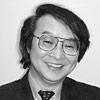 |
Professor:
SOKABE, Masahiro, PhD
1973 Graduated from Osaka University, Faculty of Engineering Siences. 1975 Completed a master course in Physics, Osaka University. 1975 Research Associate, Osaka University, Faculty of Human Sciences. 1985 Lecturer. 1987 Associate Professor. 1992 Professor, Nagoya University School of Medicine, Department of Physiology. 1999 Professor, Nagoya University Graduate School of Medicine, Department of Cell Science. 2003 Adjunct Professor, NIPS.
Speciality: Ion Channel and Cell Biophysics, Neuroscience |
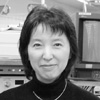 |
Associate Professor:
KUNO, Miyuki, PhD
1979 Graduated from Osaka City University School of Medicine. 1981 Research Associate, Osaka City University. 1984 PhD degree in Medicine, Osaka City University. 1986 Lecturer. 1992 Associate Professor. 2000 Associate Professor, Osaka City University Graduate School of Medicine, Department of Molecular and Cellular Physiology. 2004 Adjunct Associate Professor, NIPS.
Speciality: Ion Channel and Cell Physiology |
 |
Assistant Professor:
MOHRI, Tatsuma, PhD
1978 Graduated from Yamaguchi University. 1981 Completed a master course in Physics, Kanazawa University. 1991 Completed a doctoral course in Life Chemistry, Tokyo Institute of Technology. 1991 Jean and Katsuma Dan Fellow, Hopkins Marine Station Stanford University. 1991 Postdoctoral Associate and 1993 Research Associate, University of Miami School of Medicine. 1995 Postdoctoral Researcher, University of California Davis. 1996 Research Associate, NIPS.
Speciality: Cell Biology, Cell Physiology |
 |
Postdoctoral Fellow:
HIRATA, Hiroaki, PhD
1998 Graduated from Tohoku University, Faculty of Science. 2000 Completed a master course in Physics, Tohoku University. 2003 Completed a doctoral course in Physics, Tohoku University. May 2003 Research Fellow, JST. Nov 2003 Research Fellow, NIPS.
Specialty: Cell Biophysics |


